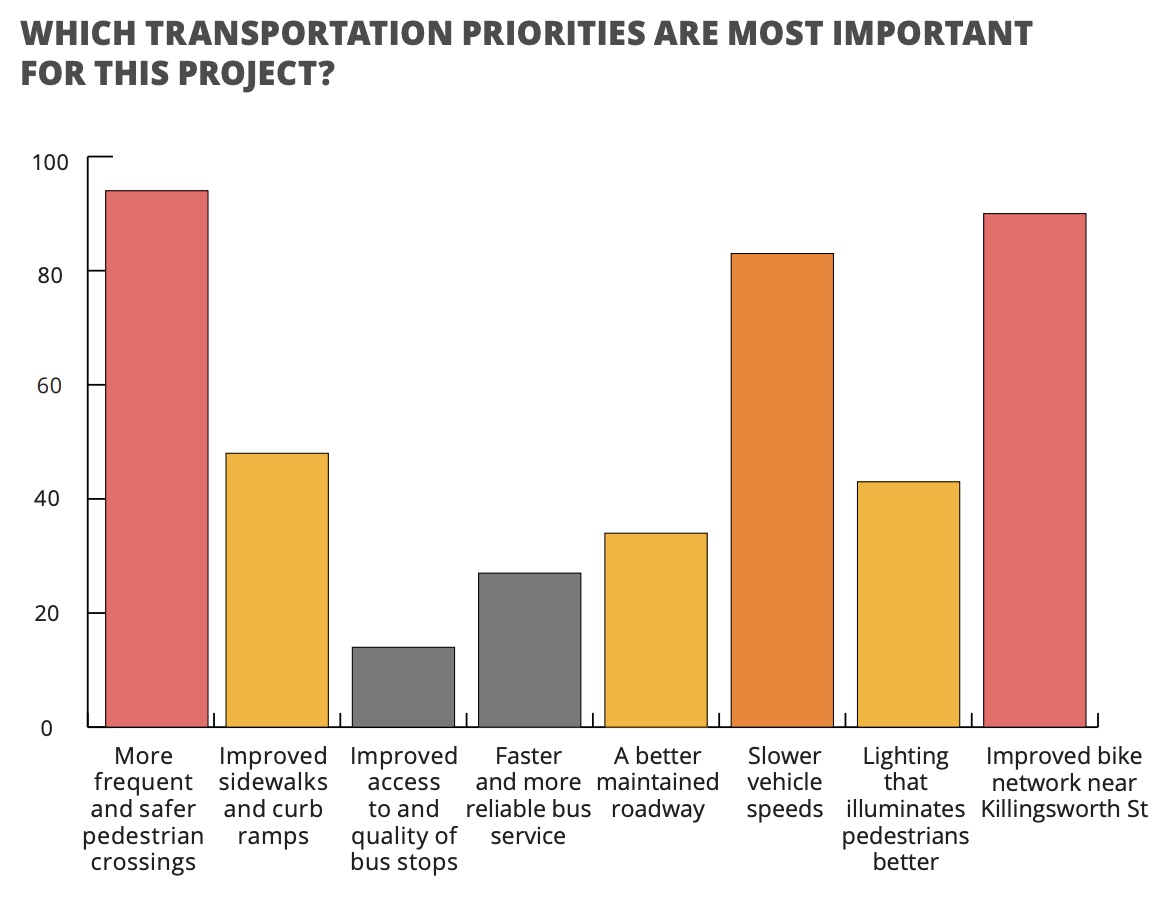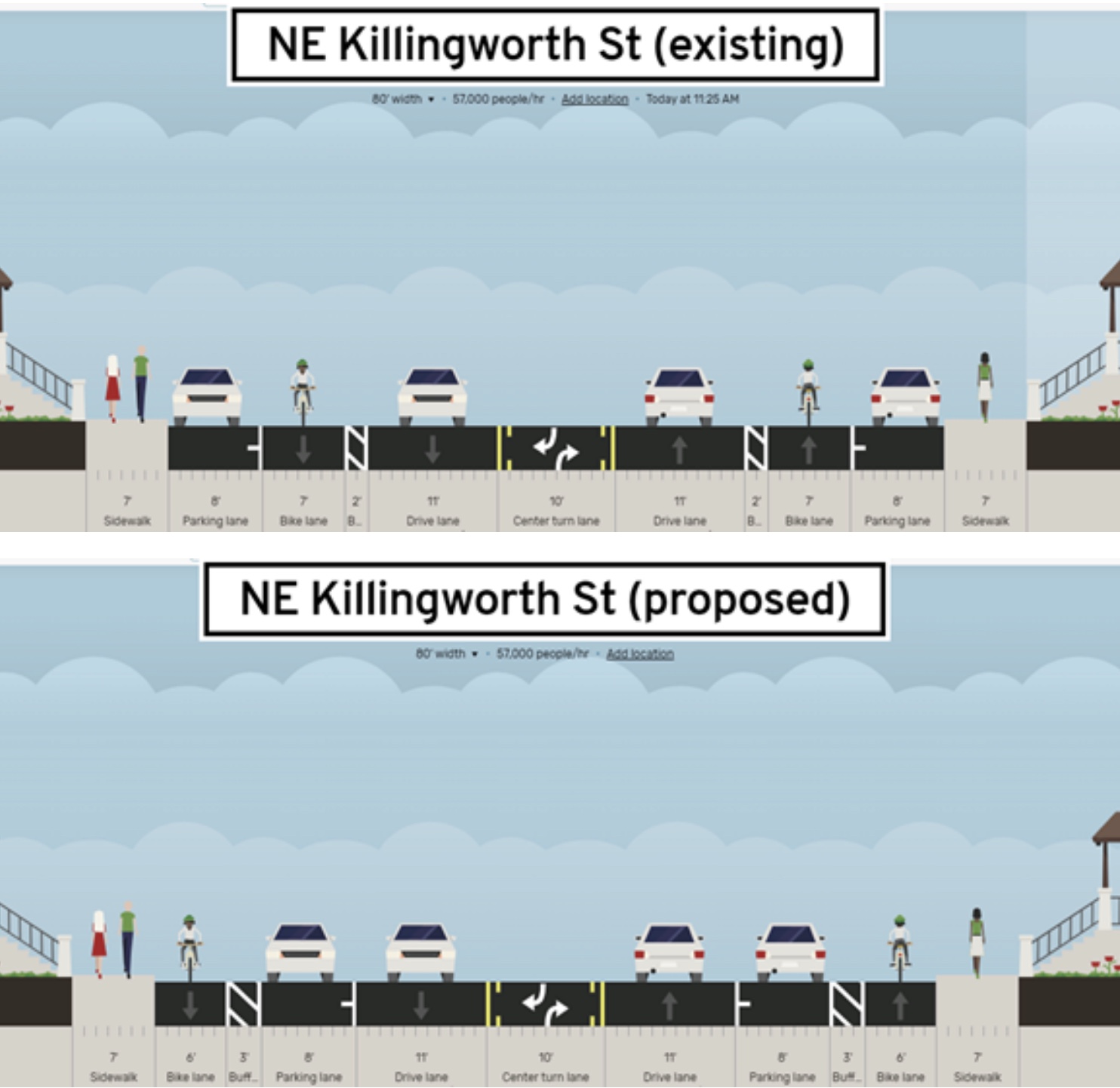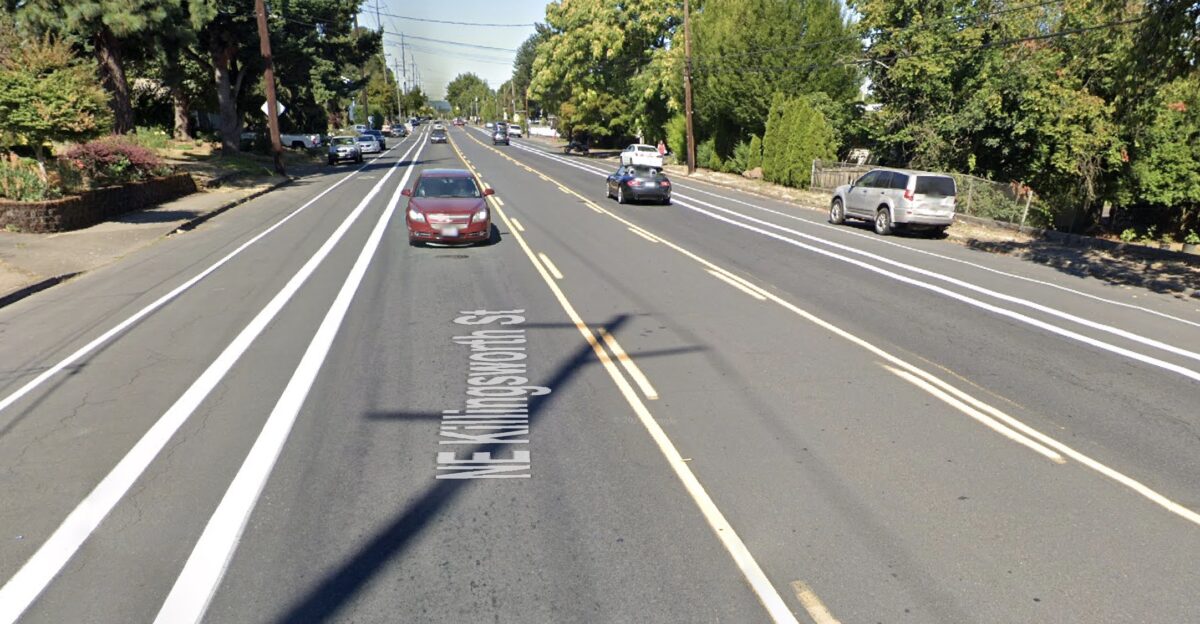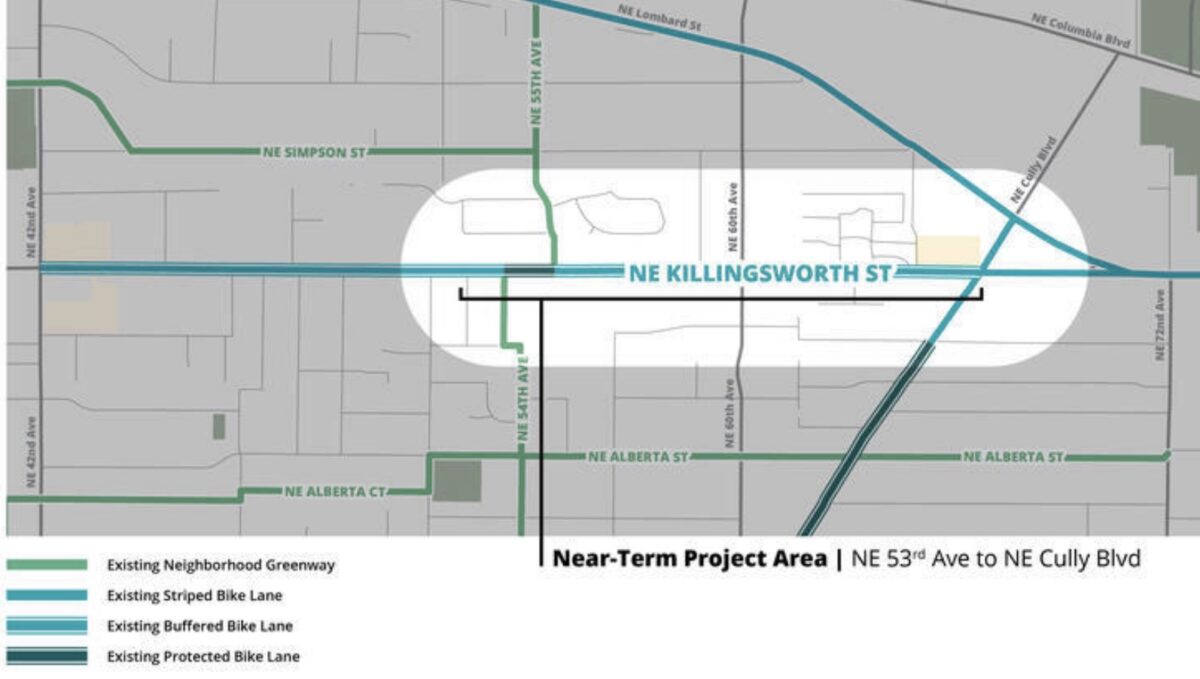On Monday afternoon, City Commissioner Jo Ann Hardesty, announced that the Portland Bureau of Transportation would heed demands from Cully neighborhood and safe streets advocates and build more robust bike lanes on Northeast Killingsworth than were initially planned.
When PBOT first looked at the 0.7-mile segment of Killingsworth between 53rd and Cully Blvd (see map), they decided it needed repaving. The initial design called for replacing the existing lane configuration with what’s there now — door-zone bike lanes with an additional painted (unprotected) buffer between riders and other road users. But in February, neighborhood residents spurred to action by advocacy group Andando en Bicicletas y Caminando (ABC, translates to “riding bikes and walking”) with support from Community Cycling Center, told PBOT they wanted more. In a joint letter to Commissioner Hardesty and PBOT Director Chris Warner, they said, “We cannot accept buffered bike lanes.”
Buffered bike lanes are cheaper and easier for PBOT to implement and they don’t require one of the things the agency is often most reluctant to do: ask for a neighborhood’s support for a better bike lane that would reduce the amount of on-street car parking. PBOT was supportive of the advocates’ request from the get-go, but it took these groups speaking up to stop the bureaucratic inertia and create the potential for something better.
This advocacy led to a pause in the project from PBOT so they could conduct a formal outreach process and vet a different design proposal — one that would separate the bike lane from other lanes via a lane of parked cars and a more robust buffer zone. Because this parking-protected bike lane proposal would be a more significant change to the street, and because it would require a 50% reduction in on-street car parking spaces in a part of the city with a higher than average amount of low-income residents and Spanish-speaking people, PBOT moved forward carefully.
To make sure their new proposal was supported by community that would be most impacted by it, PBOT sent over 4,000 postcards to mailboxes in the area, launched an online survey, and hired a contractor (Living Cully Coalition) to organize two neighborhood meetings to collect feedback.



The response was resounding support for safer bicycling and the parking-protected lane. 75% of the 151 survey participants (63% of whom lived in the Cully neighborhood) felt the proposed design would meet project goals. A whopping 95% of respondents said the two most important priorities should be safer crossings and better bicycling facilities.
The result is a $4.1 million project that will bring significant changes to Killingsworth. In addition to the smoother pavement and parking-protected bike lanes between 53rd and Cully, PBOT says the project will include (descriptions from PBOT):
- Pedestrian signal rebuild and median islands midblock between 54th and 55th avenues. This project element was changed in response to community feedback. The project team originally proposed to remove the aging signal and replacing it with median islands. The signal will be rebuilt and median islands will still be added.
- Pedestrian crossing improvement with refuge islands and lighting enhancements at 64th Avenue. This project element was changed to serve the nearby manufactured home community and in response to a serious crash involving a pedestrian a few years ago.
- Transit platform with bikes up and over behind the platform at the eastbound 64th Avenue TriMet bus stop. This project element was added in response to community concerns about parking loss. The transit platform will help retain some parking in an area with higher-density, low income housing. The platform will also allow the frequent Line 72 bus to stop in lane, reducing delay, and separates bikes and buses from each other, reducing conflicts.
“I am proud that we took a step back to deepen our outreach – part of which was to include more residents who don’t speak English as a first language,” said Commissioner Hardesty in a statement yesterday.
Community Cycling Center Programs Director William Francis shared thoughts about the project with us this morning. “ABC members are proud and pleased to see that their participation in feedback sessions and conversations with PBOT have resulted in real infrastructure changes that center the well-being and safety of both cyclists and pedestrians along Killingsworth St. It is critical to amplify the voices of community-based groups like ABC because they stand up for some of the most vulnerable and overlooked users within the transportation system, and without their presence the status quo faces little opposition.”
And Marlene Canche, a member of ABC said (in Spanish, translated by PBOT), “I think it is good that they are putting in more marked crosswalks on Killingsworth. It is also good to have more separation between vehicles and cyclists. I feel safer as a cyclist and a pedestrian with that separation. But I think a change in driver behavior is also necessary because in the end they have to respect the crosswalks in order to truly keep people safe in Cully.”
Construction is due to start and be completed in 2024.
Learn more about the project on PBOT’s website.





